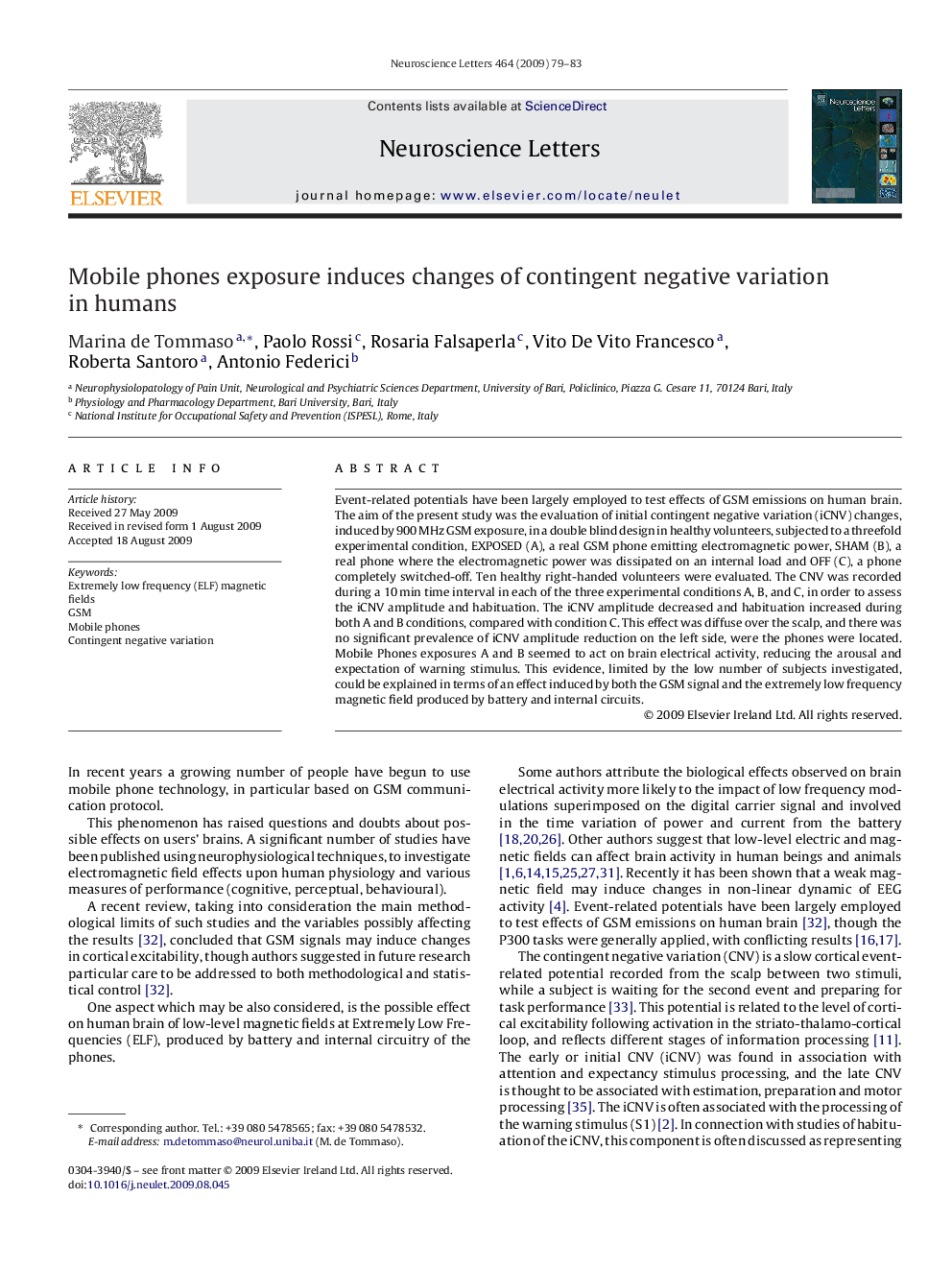| Article ID | Journal | Published Year | Pages | File Type |
|---|---|---|---|---|
| 4346850 | Neuroscience Letters | 2009 | 5 Pages |
Event-related potentials have been largely employed to test effects of GSM emissions on human brain. The aim of the present study was the evaluation of initial contingent negative variation (iCNV) changes, induced by 900 MHz GSM exposure, in a double blind design in healthy volunteers, subjected to a threefold experimental condition, EXPOSED (A), a real GSM phone emitting electromagnetic power, SHAM (B), a real phone where the electromagnetic power was dissipated on an internal load and OFF (C), a phone completely switched-off. Ten healthy right-handed volunteers were evaluated. The CNV was recorded during a 10 min time interval in each of the three experimental conditions A, B, and C, in order to assess the iCNV amplitude and habituation. The iCNV amplitude decreased and habituation increased during both A and B conditions, compared with condition C. This effect was diffuse over the scalp, and there was no significant prevalence of iCNV amplitude reduction on the left side, were the phones were located. Mobile Phones exposures A and B seemed to act on brain electrical activity, reducing the arousal and expectation of warning stimulus. This evidence, limited by the low number of subjects investigated, could be explained in terms of an effect induced by both the GSM signal and the extremely low frequency magnetic field produced by battery and internal circuits.
